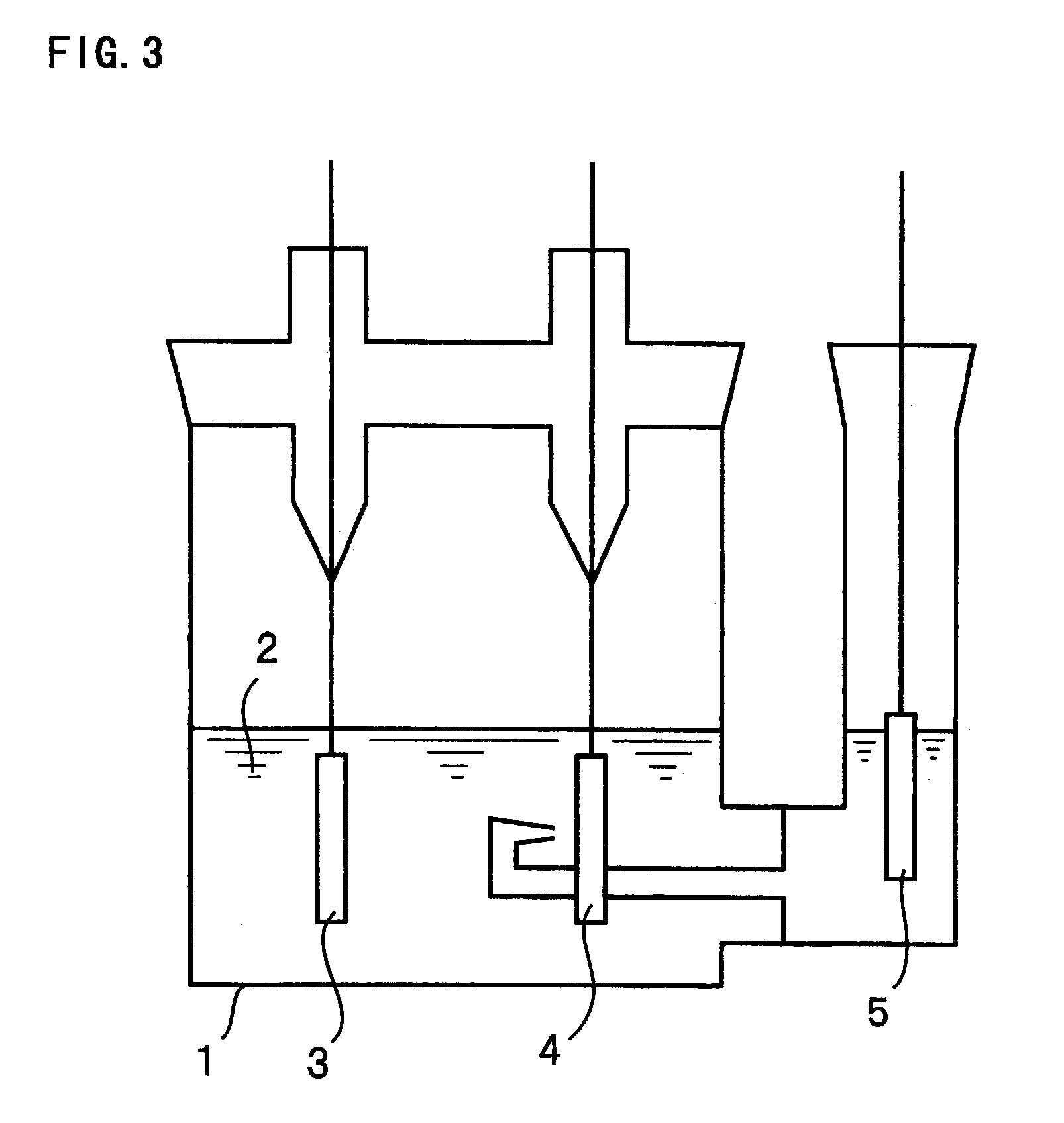Electrode for lithium secondary battery and lithium secondary battery
a lithium secondary battery and electrode technology, applied in the manufacture process of electrodes, cell components, electrochemical generators, etc., can solve the problems of internal short-circuiting and serious impact on cycle properties
- Summary
- Abstract
- Description
- Claims
- Application Information
AI Technical Summary
Benefits of technology
Problems solved by technology
Method used
Image
Examples
Embodiment Construction
Hereinafter, the present invention will be described further in details according to examples, yet the present invention is not at all restricted to the following examples and may includes various modifications or embodiments as fall within the scope of the present invention.
[Production of electrodes]
A tin thin film with a thickness of 2 .mu.m was formed on an electrolytic copper foil (the surface roughness Ra=0.188 .mu.m) with a thickness of 18 .mu.m by an electroplating method. In the electroplating, tin was used as an anode and the plating bath with the composition shown in Table 1 was used.
The copper foil on which the tin thin film was formed was divided into two and one of them was heated at 240.degree. C. for 24 hours in air to obtain an electrode A1 of the present invention. The remaining one was heated at 240.degree. C. for 24 hours in vacuum to obtain a comparative electrode B1.
The thin film on the electrode surface after the heat treatment was subjected to x-ray diffractio...
PUM
| Property | Measurement | Unit |
|---|---|---|
| thickness | aaaaa | aaaaa |
| melting point | aaaaa | aaaaa |
| melting point | aaaaa | aaaaa |
Abstract
Description
Claims
Application Information
 Login to View More
Login to View More - R&D
- Intellectual Property
- Life Sciences
- Materials
- Tech Scout
- Unparalleled Data Quality
- Higher Quality Content
- 60% Fewer Hallucinations
Browse by: Latest US Patents, China's latest patents, Technical Efficacy Thesaurus, Application Domain, Technology Topic, Popular Technical Reports.
© 2025 PatSnap. All rights reserved.Legal|Privacy policy|Modern Slavery Act Transparency Statement|Sitemap|About US| Contact US: help@patsnap.com



